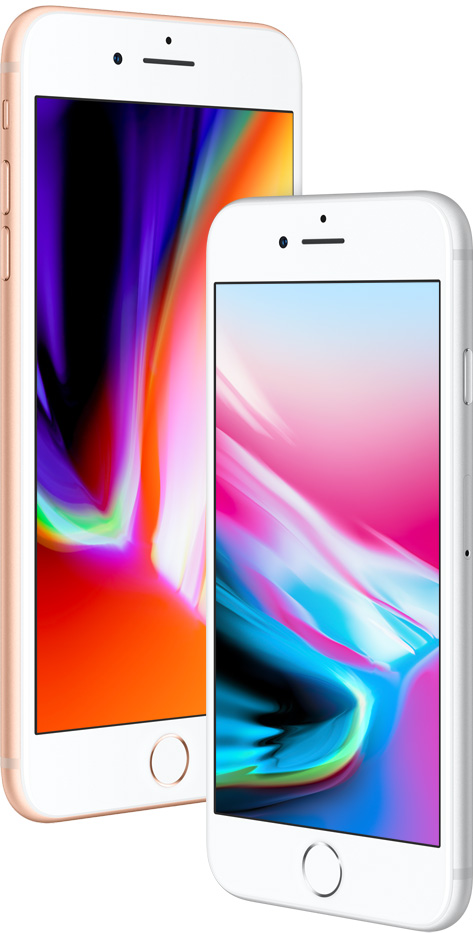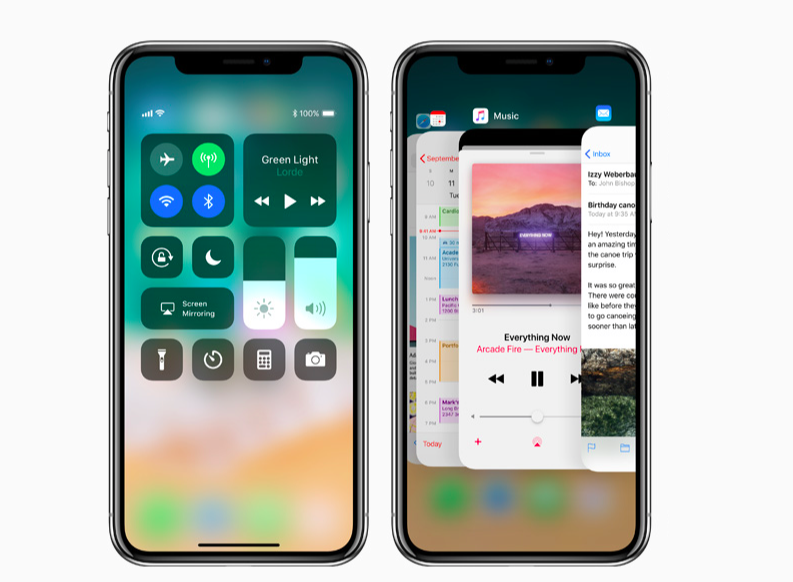Apple, as it does every year, held its Keynote event at the newly inaugurated Steve Jobs Theatre in Cupertino, Calif. in September. The event is Apple’s yearly chance to unveil and launch its latest series of devices and software. At the event, Apple once again did what it does best: Showing off slight upgrades to its existing iPhones and making it seem like it’s the biggest technological advancements in the history of mankind.
This year, Apple unveiled its next generation of iPhones — the iPhone 8 and iPhone 8 Plus, and also introduced its top-of-the-line model, the iPhone X. The iPhone X, which finally began shipping in November, was the show-stealer for most Apple partisans, but it left some others a bit perplexed. Most bewildering: The company ditched its traditional home button. That means there is no fingerprint sensor in the iPhone X. Then how do you unlock it? Well, Apple has implemented facial recognition technology to unlock the device. And then there’s that notch, which we’ll get to a bit later.
But let’s begin with the iPhone 8 and iPhone 8 Plus.
What’s new about these newest iPhones?

Both the iPhone 8 and iPhone 8 Plus look almost identical to the previous iPhones — namely the iPhone 7 and iPhone 7 Plus. While the overall form-factor and the chassis design in the iPhone 8 and 8 Plus remain similar to that of the iPhone 7 and 7 Plus, a major difference is that the newer ones come with a glass back instead of the aluminum back used in earlier models. Apple said the glass gives the devices a “premium look and feel.” But the fear of accidental drops and shatter also comes along with the premium glass back. However, thanks to its glass back, the iPhone 8 and iPhone 8 Plus supports wireless charging, which was first launched with Nokia’s Lumia device back in 2012.
Speaking about the specifications, there isn’t much of an upgrade when it comes to display size, resolution, cameras, battery capacity, memory, and RAM. However, the iPhone 8 and 8 Plus have received a different processor than the iPhone 7 and 7 Plus. The company claims that the latest Bionic chipset is 25 percent faster and efficient than the previously used A10 Fusion chipset. But only time can reveal how well this new processor fares in real-time usage and performance. The latest devices have also received minor upgrades in terms of its connectivity options such as the Bluetooth 5.0 vs. the Bluetooth 4.2 in iPhone 7s.
The iPhone 8 starts at a base price of $699, whereas the iPhone 8 Plus starts at $799. All variants of iPhone 8 and 8 plus are priced approximately $100 more than the release prices of the last year’s iPhone 7 and 7 Plus, respectively. Considering these minor upgrades and tweaks, we believe that you might well want to skip this version of iPhones if you’re already using an iPhone 7 or 7 Plus. But if you’re planning to upgrade to the new iPhones to take advantage of the wireless charging, be aware that the wireless charger is not bundled in the box.
Now, about that ‘futuristic’ iPhone X
The iPhone X (and don’t call it iPhone “ex”; Apple says it’s pronounced iPhone “ten”) is the first-ever iPhone to come with a radically new and revamped design. The device comes with an edge-to-edge all-screen design, which was previously seen in the devices such as the Xiaomi’s Mi Mix and the mainstream Samsung Galaxy S8. Apple has also ditched its home button along with TouchID and fingerprint sensor and replaced it with facial recognition unlocking feature.
Before we start speaking about the specifications of the device, let’s first give a thought to the facial recognition-based unlocking. According to Apple, iPhone X uses a very powerful system of facial recognition technology known as TrueDepth camera system. It uses a combination of sensors and light projectors to recognize your face in an instant. Prior to this, we’ve seen other biometric-based unlocking features such as fingerprints, voice, and iris scanners.
If you’ve already used any such biometric-based feature on your smartphone, say a fingerprint scanner, you might have already faced issues when trying to unlock the device. Even a minute amount of dirt, dust, or liquid can hinder the fingerprint scanning, which proves out to be quite annoying. We hope that’s not the case with the iPhone X. Finally, unlike the Touch ID, Apple’s all-new Face ID will support only one face per iPhone — although there’s already been some controversy about that.
And while the iPhone X is definitely beautiful with its eye-catching display, there’s something else that has caught people’s eyes. But perhaps most bewildering — and annoying — the top of the screen has an intrusive notch where the front-facing camera and other sensors are located. For some, the notch is a deal-breaker. And speaking of breaking, do not drop your iPhone X. The repair costs will be staggering.

As far as the specifications, the device sports a 5.8-inch OLED display with Super-Retina display. Under the hood, the device is powered by a hexa-core Apple A11 Bionic processor. For the imaging, the device has a dual 12-megapixels primary and a 7-megapixels secondary front-facing camera. The iPhone X and iPhone 8 Plus basically have the same set of innards — except for the “all-screen” OLED display and, most importantly, the price. The base variant of iPhone X starts at $999, which is about $300 more than the iPhone 8 Plus.
iOS 11
iOS is arguably the most secure mobile operating system. During the launch of iOS 11, the company made it very clear that this version of iOS is highly productive with more intuitive UI. Before we speak about the fancy UI updates in iOS, let’s speak about the features that actually matter.
We’re speaking about the productive aspects of iOS 11, which every enterprise and potential user looks for. iOS 11 now comes with a device-enrollment program (DEP), which was previously restricted to the devices that were purchased from an Apple authorized store. DEP provides a streamlined way to deploy corporate-owned Apple devices. All the devices enrolled can be monitored or supervised over the air. This way, an enterprise can have better supervision over their employees and allows it to set up restrictions and enterprise-specific customizations.

With the iOS 11, Apple has also made a few security enhancements to protect the iOS devices. The devices will now be able to establish complete trust by either manually installing security certificates or by the automated mobile device management. Setting up custom ports and transport layer security (TLS) for the AirPrints is now possible with the iOS 11. Finally, with iOS 11, security administrators can disable VPN connections on a managed iOS device, which enables an enterprise to secure itself and its employees by providing secure access to corporate resources.
Speaking about the other updates in the iOS 11, Apple finally made the notification panel hassle-free by placing all missed and recent notifications in one place. Other features in the iOS 11 include advanced Siri, smarter keyboard, better maps, and finally a customizable control center.
All this information was stated by Apple at the launch event. What the company didn’t cover has now been covered by millions of Apple users around the globe. Yes, we’re speaking about the bugs and issues in iOS 11.
Here are some of the notable and annoying bugs, which Apple may have possibly overlooked before the launch:
- Disabling Bluetooth and WiFi from the control center doesn’t actually disable them. Instead, it just disconnects from the existing connections
- Issues in the iOS 11’s mail app, which affects Outlook, Office 365, and Exchange 2016. This is a serious concern for most of the enterprise users.
Apart from these two issues, backup and sync-related issues, reduced battery life, overheating, and control center’s auto popup are few more issues reported by users.
Considering the specifications, features, flaws, and most importantly the wallet-shaking pricing of the devices, Apple has disappointed a sizable number of users with the new iPhones — minus the Apple fanboys and fangirls, of course.
An Android handset, which provides a similar set of specifications and features, is priced at almost half the price of an Apple device. So what makes these Apple devices unique from other handsets, especially considering the bulky price tags? Is it the brand-factor, which many people consider, or is it because of the refined iOS? Whatever the reason, we just hope that the company and its aficionados will one day explain how a smartphone, which is now considered as a basic necessity, justifies a four-digit price.
Photo credit: Apple



